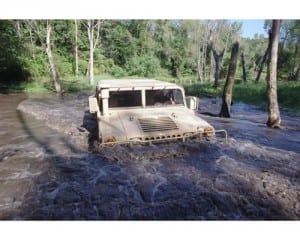
From the outside, Textron’s [TXT] survivable combat tactical vehicle (SCTV) looks almost identical to a Humvee, but the truck has been outfitted with a series of upgrades that give it protection on par, if not better than the Mine-Resistant Ambush-Protected (MRAP) vehicle.Though the Army has chosen its Humvee successor in the Oshkosh [OSK] Joint Light Tactical Vehicle, there are hundreds of thousands of Humvees still in operation worldwide and companies like Textron and original Humvee manufacturer AM General are banking…

 By
By 











